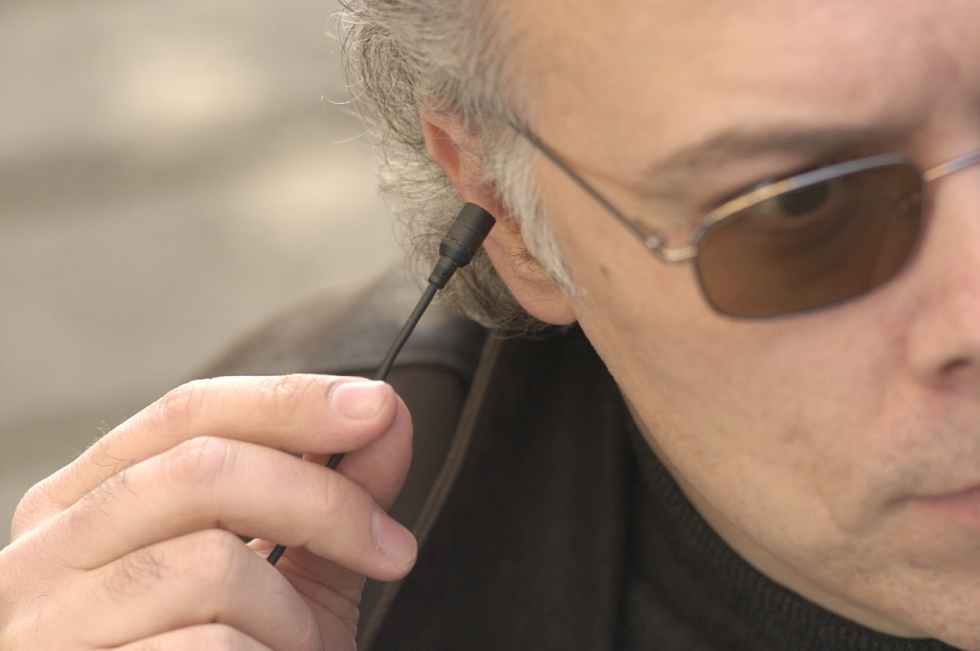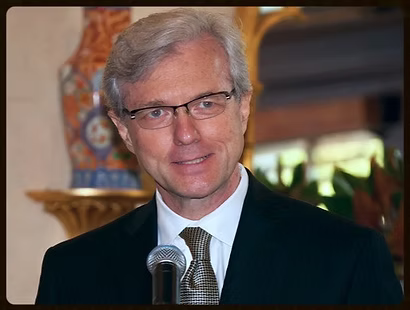On 19 December 2024, composer Agostino Di Scipio utilized live Kyma signal processing in his ambitious intermedia work premiered at the Nuova Consonanza festival.

Umano Post Umano is, in some sense, a review of Di Scipio’s artistic work, exposing the full range of performance practices he has explored over the last 25 years (since he first introduced Audible Ecosystemics). Umano Post Umano features music, electroacoustic environments and digital audio processing by Agostino Di Scipio, video projections and stage design by Matias Guerra, texts collected from job advertisements, legal and financial advertising and from Hesiod’s Theogony, as well as multiple performers on acoustic instruments, each of whom also operates a live camera.
The work has its origins in a 2008 commission by the Società dei Concerti “Barattelli” in L’Aquila, but work on the project had to be suspended and cancelled as a result of the devastating L’Aquila earthquake of April 2009. Revived and rethought for the Nuova Consonanza 2024 festival and the Pelanda space, the chamber music theater project evolved and emerged with a new title and concept: Umano post umana*.

Central to the work is the concept of sound as the interface. Sound events are never of solely human origin but are always hybrid and distributed according to ecosystemic dynamics where each component is in contact with every other part. The piece reflects, through the experience of sound, today’s exasperating conditions of precarious work, an expression of a conception of the human as a resource managed by mechanistic and algorithmic agents.

Each aspect of the performance – according to a reduced economy of instrumental, electroacoustic, computer and telematic means – evolves in relative autonomy but as a function of the specific performance space – “in real time” but above all “in real space”. What emerges is a coherent ensemble that is nevertheless precarious and subject to disorientation, drifts and possible failures. The overall whole emerges from the material interdependence of performers, shared spaces and creative appropriation of means.

Microphones and loudspeakers are irregularly scattered throughout the space and light, semi-transparent sheets cut the space irregularly. In the soft light, there are workstations with laptops, small percussion instruments and various accessories – as well as musical instruments: flutes, cello, bass clarinet, timpani (all equipped with electronic prostheses that “increase” but also “decrease” and over-determine the instrumental gestures). Each workstation is an autonomous instrumental-electroacoustic-computer chain, not subject to centralized direction or management.

The instruments themselves are mechanical components of a system, from whose functioning they are not independent. The performers have their own service lights (headlamps) and low-resolution webcams through which they watch (monitor?) each other. Lights and images pass through the sheets, projecting onto the walls, onto the performers, and onto the listeners. Some operators wander around in the dim light providing “emergency” technical maintenance to the various workstations.
In the economy of means thus designed, the occurrence and articulation of sounds remain tied to the here-and-now of performative circumstances and contingencies: is it possible that – from silence, from background noise, from acoustic residues of the place, from the mere co-presence of humans and machines – frictions and contacts are formed, that signals and a meaning arise? The sounds take shape from distributed relations, from uncertain and open co- and inter-dependencies, heard at times as atmospheric textures, and, at other times, as clear transient gestures.
Music is made first of all by listening: listening is an active part of the performative dynamic. One acts and is constantly acted upon, one is bound by what one intends to bind: here “music” is the tension of this being more and less of oneself. Performative tension in unstable equilibrium, for whose precariousness (tragic) we must be grateful. In sound we listen (welcome) the conditions of the happening of events and the conditions of our welcoming them (listening).

On 8 November 2024, Di Scipio performed in Essen Germany with his former student Dario Sanfilippo as part of the Philharmonie Essen NOW! Laissez vibrer Late Night Concert Machine Milieu. Machine Milieu is a joint live electronics project in which the two performers’ computer music systems are networked with each other. The idea is to view the human performer, the equipment, and the performance space as three places connected to each other through the medium of sound. According to Di Scipio and Sanfilippo, “Machine Milieu” can “develop an integral and potentially autonomous performance ecosystem based exclusively on location-specific acoustic information.” For this performance, the acoustic details were provided by the RWE Pavilion in Essen.
Di Scipio is the chair of the Electronic Music department at Conservatory of L’Aquila, and the chief coordinator of the doctoral board (supervising all PhDs in “artistic research in music”).
In 2020, he completed his PhD at University of Paris VIII with the dissertation, What is « living » in live electronics performance ? : an ecosystemic perspective on sound art and music creative practices, in which he explores the question of “liveness” in the performance of live electronic music, particularly in view of the fact that any performance approach today relies on a large set of heterogeneous technological infrastructures. He proposes a “systemic” view of liveness, and describes the operational details of his own artistic research endeavors. Finally, moving from the “living” character of electronic performance to the “lived” experience of sound, he poses the question of an “ecosystem consciousness” in the cognitive process of listening, particularly as it relates to compositional and sound art practices based on a strict economy of means.
























